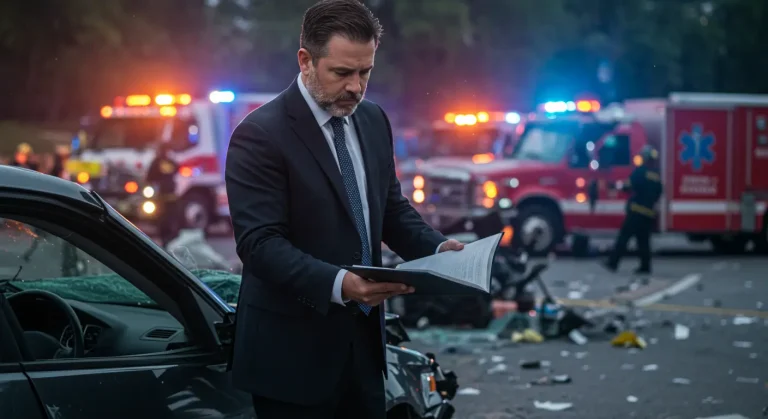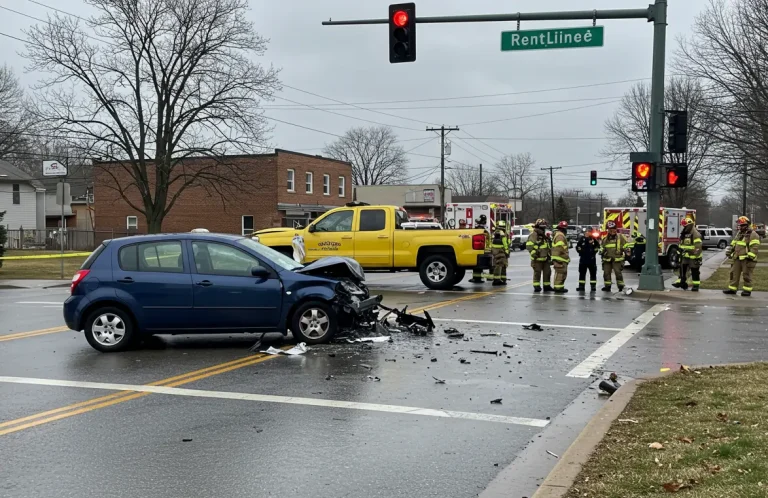Misunderstandings About Road Signals That Lead to Accidents and Legal Trouble
Most car crashes don’t happen because someone is racing or doing crazy stunts. The truth is, a lot of accidents start because a driver didn’t pay close enough attention to a traffic signal or misunderstood a road sign.

Source from Freepik.com
The law doesn’t really care if you didn’t mean to make a mistake. If you ran a red light or didn’t follow the rules properly, you’re the one who will likely get blamed. If someone’s failure to obey traffic signals causes accidents, they will be held liable.
Police will hold the person responsible, whether or not they intentionally broke a traffic rule. In this blog post, we’ll cover exactly how these misunderstandings happen and what kind of problems you can get into if you don’t get them right.
Not Knowing Who Gets to Go First and Getting It Wrong
One of the biggest problems on the road is not knowing who has the right of way. This rule is there to keep traffic moving safely, but a lot of people get it wrong. For example, two cars stop at a four-way stop, and both drivers hesitate or wave each other on. Sometimes, both go at the same time, and then there’s a crash.
Right-of-way rules are pretty clear once you know them. If you’re at a T-intersection, usually, the car going straight has the right to go first. If you’re turning left at a green light, you have to wait for oncoming traffic to clear before turning. But some drivers just guess or assume it’s safe and end up cutting someone off.
If you cause a crash because you didn’t follow the right-of-way rules, the law will hold you responsible. You could have to pay for damages, get fined, or even face court if someone was hurt. Not knowing the rules is not an excuse. The rules exist because they prevent accidents. If you don’t follow them, you are the one who caused the problem.
Using Turn Signals Too Late or Not at All
Turn signals are there to warn other drivers about what you’re about to do. It’s a simple idea, but a lot of people don’t use their signals properly. Some don’t signal at all. Others flick their signal on only when they’re already halfway through a turn. That’s too late.
Imagine you’re following a car, and suddenly, they brake hard and turn right without any signal. You thought they were going straight, so you weren’t ready. Now you crash into the back of them. Even though they didn’t signal, you might still be partly blamed for following too closely.
Signals give everyone time to react. If you don’t use them properly, it creates confusion. Drivers don’t know what you’re going to do, and that’s how accidents happen. If it was your mistake with the signal, you could be the one facing fines or worse.
Misjudging Yellow Lights
When the light turns yellow, it doesn’t mean “speed up to beat the red.” It means “get ready to stop.” Many drivers don’t realize this and accelerate, hoping to get through the intersection before the red light.
If you enter the intersection as the light turns red and someone else has the green from another direction, you’ve created a very dangerous situation. A side-impact crash can happen, which is often more serious because it hits the side of the car where people sit.
If you caused a crash because you rushed through a yellow light or ran a red light, the law will treat it seriously. You can be fined, lose driving points, and be held responsible for all the damage and injuries.
Changing Lanes Without Proper Checks
Many drivers don’t check properly before moving. Some forget about their blind spots. Others only glance quickly at the mirror and move over without making sure the lane is clear.
Even worse, some drivers don’t use their turn signals at all or signal too late. This doesn’t give other drivers enough time to adjust. You need to check your mirrors, look over your shoulder to check your blind spot and signal clearly before changing lanes.
If you hit someone because you changed lanes without checking or signaling, you’ll almost certainly be the one held responsible. Insurance companies, other drivers, and police will all look at what you did wrong when assigning fault or compensation to you.
Conclusion
At the end of the day, misunderstanding road signals can earn you serious injury, a wrecked car, and huge legal trouble. The worst part is that you might not even realize it was your fault until someone else’s lawyer shows exactly how you got it wrong.
If you’re driving or learning to drive, it’s critical to know exactly what every sign, signal, and rule means. Don’t guess or do what feels right in the moment. When you get it wrong on the road, you don’t just risk your own safety; you put everyone else in danger, and you might end up paying the price.






